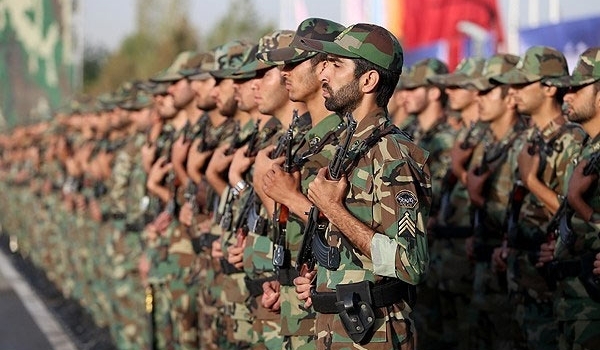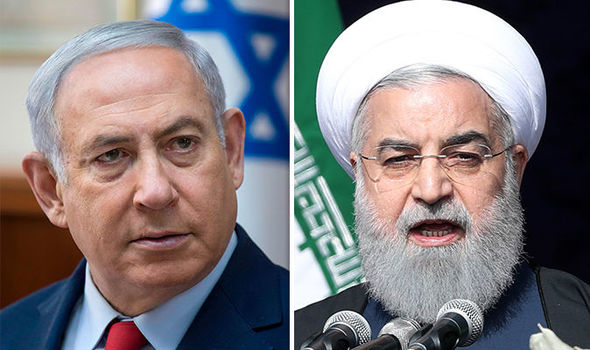War With Iran Would Be Disastrous And Enormously Costly The maximum pressure campaign is bad enough – it is not likely to change Iranian behavior, and it is ratcheting up tensions that could easily get out of hand......... “The administration’s bellicose, go-for-broke tactics for dealing with Iran are fundamentally at odds with the president’s insistence on extricating the United States from costly and protracted military conflicts.”........ A better course would be to re-enter the Iran nuclear deal and seek a détente that will make further conflict in the region less, not more likely. But that course may have to await a new administration. .........
a war with Iran would “make the Afghan and Iraqi conflicts look like a walk in the park.”
...... studies of the costs of America’s post-9/11 wars have found that the funds spent or obligated on these conflicts are at $5.9 trillion and counting. Yet in advance of the 2003 U.S. invasion of Iraq, Bush administration officials were claiming that it would cost on the order of $50 to $100 billion, not the trillions that in direct and indirect costs that it has generated to date. ......... a full-scale conflict with Iran could cost trillions, a huge commitment of public funds at a time when deficits are rising, the economy is at risk, and needed public investments in infrastructure, green jobs, health care, and education are lagging. ........ War is an uncertain undertaking, and the idea that it can be easily contained once a conflict starts is naïve at best, and ludicrous at worst.What Happens to Israel if the US and Iran Go to War? once a shooting war were actually underway, full-scale military engagements could quickly and substantially involve Israeli armed forces (the IDF). In plainly worst case scenarios, these clashes would involve assorted unconventional weapons and directly impact Israel’s civilian populations. Looking ahead, the most fearful worst case narratives could sometime involve nuclear ordnance. ......... a “collateral war” would come to Israel as a catastrophic fait accompli, a multi-pronged belligerency wherein even the most comprehensive security preparations in Jerusalem/Tel-Aviv could suddenly prove inadequate.......... Donald Trump has favored or revealed absolutely no tangible military doctrine. ......... once confronted with a “no doctrine” war launched against Iran by this American president, whether as a defensive first-strike or a retaliation, Israel’s senior strategists would need to fashion their own corresponding doctrines......... Israel is less than half of the size of America’s Lake Michigan. ........ In an upcoming war with the United States, Tehran would likely regard certain direct attacks upon selected Israeli targets as proper “retaliations” for American strikes ......... Iranian forces could potentially gain operational access to hypersonic rockets or missiles....... Israel’s critical capacity to shoot down hypersonic glide vehicles (HGVs) and/or hypersonic cruise missiles (HCMs) might subsequently prove inadequate......... it could be to Tehran’s perceived advantage to ostentatiously drag Israel into any US or Iran-initiated war. ........ a Trump-initiated war against Iran would strengthen Saudi military power specifically and Sunni Arab military power in general. While such an expected strengthening might now seem less worrisome to Israel than further Iranian militarization, this delicate strategic calculus could change very quickly......... “Be careful what you wish for.” ......... Should the Trump-led American military find itself in a two-front or multi-front war — a complex conflict wherein American forces were battling in Asia (North Korea) and the Middle East simultaneously — Israel could unexpectedly find itself fighting on its own. ........ the “whole” of any deterioration caused by multi-front engagements could effectively exceed the sum of constituent “parts.” ......... Israeli strategists and planners will need to remain aptly and persistently sensitive to all conceivable synergies. In this connection, it goes without saying that the Trump administration is unaccustomed to such challenging intellectual calculations. ........ for these planners in Washington, complex strategic decision-making can be extrapolated from the unrelated worlds of real-estate bargaining and casino gambling. ........
the determining standard of reasonableness in any military contest must always lie in its presumed political outcomes
....... For a state to get caught up in war — any war — without any clear political expectations is a mistake, always, on its face, or prima facie. .......... For more years than we may care to recollect, futile American wars have been underway in Iraq and Afghanistan. In time, for both Iraqis and Afghans, once-hoped-for oases of regional stability will regress to what English philosopher Thomas Hobbes would have calleda “war of all against all.”
At best, what eventually unravels in these severely fractured countries will be no worse than if these wars had never even been fought............ This will not be a desired political outcome........ America’s principal doctrinal enemy has changed, dramatically, from “communism” to “Islamism” or “Jihadism.” ........it is a formidable and finely-textured foe, one that requires serious analytic study, not ad hoc responses or seat-of-the-pants presidential eruptions.
......... The Jihadist enemy of Israel and America remains a foe that can never be fully defeated, at least not in any tangibly final sense. To wit, this determined enemy will not be immobilized on any of the more usual or traditional military battlefields........... this after the United States, not Iran, withdrew from an international legal agreement that was less than perfect, but (reasonably) better than nothing at all. ......... Plausibly, there could be only a tiny likelihood that American bombs and missiles would be adequately targeted on widely multiplied/hardened/dispersed Iranian nuclear infrastructures. .......a US war against Iran would be contrary to Israel’s core national security interests and obligations.
........ If, at any point during crisis bargaining between Iran, Hezbollah, Israel, and the United States, one side or the other should place too great a value on achieving “escalation dominance” and too little on parallel considerations of national safety, the expanding conflict could quickly turn “out of control.” ........ Such consequential deterioration would be especially or even uniquely worrisome if Israel threatened or actually launched some of its presumptive nuclear forces. .........For Israel and the United States, it is high time for sober humility and determined caution. Without exception, all mentioned Iran-centered quandaries represent turbulent and uncharted waters.
Israel Is Escalating Its Shadow War With Iran. Here's What to Know Israel, which traditionally maintains a policy of ambiguity over oversees military operations, has not taken responsibility for either the Iraq attack or the Beirut drone strike, although its military said it had carried out a separate airstrike on Saturday near the Syrian border in order to foil an “imminent” drone attack planned by the Iranian Revolutionary Guards and Hezbollah (Iran has denied planning the strike.) ........ Iranian responses could come in various forms: an attack from Hezbollah or other Iranian-proxies; attacks from Sunni militias with alliances of convenience to Tehran; and even attacks on Jewish or Israeli “targets” outside of Israel. A worst case scenario, the official said, might be an Iranian-backed attack on Jewish settlements in the West Bank or the Golan Heights, which could set off a war......... After the Syrian conflict broke out in 2011, Sunni rebels—many financed by Iran’s Gulf rivals, Saudi Arabia and the UAE—rose up against President Bashar Assad’s regime. In response, Iran began pouring money, resources and soldiers into the country in support of Assad’s regime, with which it had been strategically aligned since the 1980s. Concerned about the entrenchment of hostile Iranian forces near its northwest border, Israel has since launched hundreds of air strikes in Syria, including against Hezbollah positions and convoys transporting arms to the group in Lebanon. Iran and Iranian proxy militias have occasionally responded with cross border strikes, such as by launching rockets over a ski resort in the Israel-occupied Golan Heights in January.......... Israel’s success at disrupting Iran’s infrastructure build-up in Syria has led the Islamic Republic to turn its attention to Iraq, where there have been several reports in recent months that Iran is building an array of ballistic missiles aimed at Israel. Israel appears to have followed suit, with recent attacks reported—but not acknowledged—on weapons storage facilities controlled by Iranian-backed Iraqi militias......... the general pattern of Israel’s air strikes in Syria—largely tolerated by Russia, which backs the Assad regime. Israel’s attacks on convoys bound for Lebanon have typically concentrated on thwarting Hezbollah’s “accuracy project”—the group’s attempt to enhance the capacity of its rocket cache—to pinpoint targets in Israel....... “Iran has no immunity, anywhere” adding that Israel would act against Iran “wherever it is necessary.” ........ while Netanyahu may be keen to burnish his “Mr. Security” image, analysts consider him risk-averse and he has been careful to avoid entangling Israel in overseas conflicts....... The ramp up of Israel-Iran tension also coincides with discussion of a potential rapprochement between the U.S. and Iran. ..... Top Israeli officials have voiced concerns that talks could result in a relaxation of the U.S.’ “maximum pressure campaign.” ....... the group was planning a “calculated attack” on Israel that would remain “below the threshold of war.” ....... the dozens if not hundreds of unanswered attacks on Hezbollah positions and convoys in Syria, demonstrate the group’s lack of capacity to effectively retaliate, prompting further escalation ........
Israel is “simply informing everybody that a new rule of the game is being introduced,”
Khashan says. “That is what drove Hassan Nasrallah out of his mind and caused him to issue a belligerent statement that I don’t believe he’s capable of enforcing.” .........likened the situation to both sides performing “acrobatics on the edge of the abyss.”Iran: The Case Against War To be sure, the Iranian government is guilty of genuine transgressions against American interests and values. It backs Syria’s brutal dictator, Bashar al-Assad. It undermines the security of Israel by organizing and sustaining Shia militias in Syria, supporting the Palestinian extremist group Hamas, and arming the Lebanese Shia militia Hezbollah. By serving as Iran’s proxy on Israel’s border, Hezbollah exposes Lebanon—long a fragile state—to the risk of Israeli retaliation. Iran has also supported Shia militias in Iraq that in theory answer to the Iraqi prime minister through a special commission, but in practice are outside the national military command structure, which compromises the cohesion and authority of the Iraqi state......... With money and weapons, Iran backs the Houthis, an insurrectionist movement in Yemen that has ousted the elected government and attacked the territory of its Saudi patrons. It has allegedly tried to stir Shia unrest in Sunni-ruled Bahrain, where the US has an important naval base, and in the Eastern Province of Saudi Arabia. It is developing ballistic missiles that could threaten its neighbors and—especially if they are capable of carrying nuclear warheads—could provoke an arms race in the region. Iranian authorities detain and jail foreigners, including Americans, on fabricated charges. And the Iranian government oppresses its own people by coercing them into obeying strict religious rules, limiting their political choices, and abusing and imprisoning journalists........
It wants to force Iran to curtail its ballistic missile development and its provocations in Iraq, Syria, and Yemen—none of which the JCPOA addresses—as well its nuclear program.
........ It has not carried out terrorist attacks against Americans in years.1 Its reactions to Israeli strikes on the small forces it maintains in Syria have been subdued. The Shia militias it backs are ragtag, composed mainly of young Afghani, Iraqi, and Syrian fighters. Moreover, in Iraq, militias thought to be aligned with Iran—known as Popular Mobilization Forces—have not come into conflict with US troops and, in the fight against ISIS, were battling a common enemy. ......... Iran is economically beleaguered and its military is weak, plagued by outdated equipment, a defense-industrial base that cannot supply much of the hardware it needs, and a conscript army that is poorly trained. Its warplanes use 1960s technology. Its navy is essentially a coastal defense force, and its only means of harassing the US Navy are small, lightly armed boats that would use swarming tactics against 105,000-ton Nimitz-class carriers ......... It does possess a large inventory of cruise missiles, rockets, and mines, and is capable of disrupting shipping and harming US warships. ....... The idea that Iran could dominate, let alone subjugate, the states on the Arab side of the Persian Gulf is risible. ........Yet the Trump administration, with Saudi Arabia’s encouragement, insists that Iran controls four regional capitals—Damascus, Sana’a, Baghdad, and Beirut—and has designs on others, such as Manama, the capital of Bahrain. This is a variation on the “Shia Crescent” scenario, which acquired currency about fifteen years ago among wary Sunni governments in the region. ......... The government that ultimately emerged in Baghdad from national elections in 2018—led by President Barham Salih, a British-educated Kurdish leader; Prime Minister Adel Abdul Mahdi, a Shia economist and intellectual who lived in France for years and attended an American Jesuit school in Baghdad; and Speaker Muhammad al-Halbusi, a former governor of Anbar Province and a supporter of US troops remaining in Iraq—can scarcely be described as Iran’s dream team for Iraq. ......... It’s true that Iran has for years had a strong foothold in Lebanon and has supplied Hezbollah with a vast arsenal of increasingly sophisticated missiles and rockets, which give Tehran the capacity to attack Israel by proxy. But Hezbollah’s militarization was the product of Israel’s invasion and occupation of southern Lebanon in 1982, which was aimed at eliminating the Palestine Liberation Organization. Iran seems to regard Hezbollah’s missile inventory as part of its own strategic deterrent, not to be put at risk for anything short of preventing Iran’s annihilation by Israel. ...........Iran’s long-standing influence in Lebanon melds self-protection with strategic expansion.
........ Critics often point to Iranian assistance to Hamas, but it has been relatively modest, mainly financial and political, and essentially symbolic. Iran’s support for Palestinian militants and its other marginal challenges to regional stability are manageable and do not strategically threaten Israel, the United States, or its Gulf Arab partners. ........the overall thrust of Iranian security policy is to thwart Sunni jihadism wherever it appears, especially in Syria and Iraq.
......... Secretary of State Mike Pompeo harbors a profound conviction that in opposing Iran and embracing Israel he is an instrument of God’s will, having pledged to continue such efforts until “the rapture.” .......The Trump administration’s stated reason for “maximum pressure” on Iran through sanctions is to force Tehran back into negotiations to limit its ballistic missile program and destabilizing regional activities. But given the high degree of mistrust that the United States’ unilateral withdrawal from the JCPOA has generated in Tehran, that rationale can only be read as disingenuous.
......... In effect, Bolton and Pompeo have repurposed sanctions—normally conceived as an alternative to armed conflict—as the means to provoke a war. ......... Bolton, Pompeo, and CIA Director Gina Haspel apparently favored retaliation, while the Pentagon counseled restraint. ........ It is conceivable that Trump could try to rebrand the JCPOA with marginal changes as his own improved deal—much as he did with NAFTA .........It remains impossible to tell whether the administration actually intends to go to war, is merely engaging in coercive diplomacy, or is adrift in a sea of miscues. It may not matter. In a maelstrom of probes and provocations, strategic intention may give way to heedless reaction.
.......... The White House has reinforced this possibility by doing away with the systematic interagency process conducted by the National Security Council that has traditionally built consensus on foreign policy and, even given the constraint of secrecy, allowed reasonable transparency about how that policy is formulated.George W. Bush was the last president to jettison the policy coordination process, and it resulted in the long and bloody occupation of Iraq.
............. Trump is even more ignorant about world affairs and scornful of protocol, process, and custom than his advisers. ........ To the extent he needs a war to mobilize his base, he has one on the southern border, to which he has deployed military units, and where the enemy cannot shoot back. ........ The Pentagon is considering dispatching more warships and combat aircraft and an additional six thousand troops to the Middle East, the first group of which has been authorized. Both the 1991 and 2003 interventions in Iraq demonstrated that as operational momentum toward war builds, it becomes politically more difficult to resist..........At this stage, Tehran’s national security decision-making appears more orderly and transparent than Washington’s.
........ The Obama administration’s accomplishment in negotiating the JCPOA was to sidestep Khamenei’s deep-seated hostility toward the US and Israel, which had until then proven an implacable obstacle to US diplomacy. The Trump administration has managed to weaken the pragmatic restraint of the hard-line leadership while turning Iranian moderates into hard-liners. .......... The Islamic Revolutionary Guards Corps (IRGC)—the elite, secretive, and proactive element of the Iranian military that the State Department designated a foreign terrorist organization in April despite objections from the Pentagon—looks to be regaining the upper hand. .......... The IRGC has also reissued its customary threat to close the Strait of Hormuz, through which 20 percent of the world’s oil passes. Such a move would be a last resort; it would send oil prices through the roof and almost certainly prompt retaliatory US action. .......... Iran is predisposed to respond defiantly to concerted American attempts to cripple it. ........ Neither government might, on balance, really want war. But concerns about reputation and credibility, the risk of spontaneous clashes between US and Iranian forces, the provocations of proxies, or poorly calculated brinkmanship might cause one. These prospects are doubly worrying because the degree of mutual antipathy and distrust between the two adversaries and the absence of lines of diplomatic communication would make it exceedingly difficult for them to reverse course. ....... It is probably lost on Bolton and Pompeo—and certainly on Trump—that the US intervention in Iraq ended up increasing Iranian influence there and elsewhere in the region. It may also be lost on them that a war with Iran could be even more disastrous than the war in Iraq. ........... 1984–1988 tanker war ...... The most strategically significant aspect of this confrontation, however, was Reagan’s self-control. Even when a US warship was attacked, resulting in US casualties, he refrained from striking Iranian territory and even forced out a high-ranking US commander for planning to do so. Restraint is the real lesson of the tanker war, but Republican hawks are unlikely to heed it. .......... If the administration were to take a harder look at the tanker war, it might observe that Iran, while still vastly weaker than the United States, is in a better position to resist now than it was thirty years ago, when it had been drained by the long war of attrition with Iraq. .......... possesses old-style asymmetric means of response, such as terrorism, and new ones, including cyber capabilities and missiles ........ In the worst case, the United States would launch something along the lines of Operation Iranian Freedom, invading and occupying the country. ......... US forces would initially suppress Iran’s air defenses, target its shore batteries and missile launchers, damage communication networks, strike the headquarters of security services that keep the population under control, and cripple if not destroy hardened nuclear-related facilities with deep-penetrating “bunker-busting” bombs. If occupying Tehran became the American objective, US ground forces would overwhelm the Iranian army and oust the regime by forcing it to flee or killing its top officials with a lucky missile strike. ...........Iran is appreciably larger than Iraq in both territory and population, so gaining control of the country and winning popular support would be all the more difficult.
While Iraq’s military was handily defeated, Sunni groups reinforced by volunteers from elsewhere in the Arab world and Shia militias indirectly supported by Iran bled US forces for nearly a decade. US forces within Iran would presumably be exposed to such guerrilla tactics, which while not decisive, drive up the cost of intervention and weaken public support for the war at home. ........... internecine warfare among its ethnic minorities—Azeris, Kurds, Baluchis, Zoroastrians, and Arabs—portending the fragmentation that worried US intelligence during the Iran–Iraq War ............. Displaced persons within Iran or crossing into neighboring countries as refugees would present a humanitarian challenge comparable to Syria’s. .......long wars begin with the conviction that they will be short.
........ Washington would find it hard to cobble together a coalition of the willing worthy of the name. ........ prospects for successfully forging a stable, US-friendly government in Iran would be less than dim. And the conflict wouldn’t wind down until long after it had caused chaos in the region and strategically isolated the United States. ......... The Israelis have no doubt started to consider the long-term regional impact of a war between the US and Iran. Their change of heart should be a warning that US policy is spinning out of control.$100 a barrel oil: Trump’s war talk with Iran risks ‘worst-case scenario’ that slams U.S. economy
What war with Iran could look like Iranian coastal defenses would likely render the entire Persian Gulf off limits to U.S. Navy warships. Iran’s advanced surface-to-air missile defenses would be a significant threat to U.S. pilots. And Iran’s arsenal of ballistic missiles and cruise missiles put U.S military installations across the U.S. Central Command region at risk. The cost in U.S. casualties could be high.............. All the while the network of proxy Iranian jihadi cells, from the Middle East to Central America find novel and makeshift ways to poke, prod and provoke the United States by hitting soft targets whenever and wherever possible. ....... What followed also included leaders of both Iran and the United States claiming they didn’t want war, yet each preparing in many ways for exactly that outcome. ........ the head of the Iranian proxy groups have been ordered to prepare for a range of strikes against U.S. and allied targets across the Middle East. ........ one threat to U.S. forces in the region is the Fateh, an Iranian semi-heavy submarine armed with subsurface-to-surface missiles with a range of about 2,000 kilometers. ....... The Fateh has subsurface-to-surface missiles with a range of about 2,000 kilometers (1,250 miles), capable of reaching Israel and U.S. military bases in the region. ........ Unlike with the Iraq War, you can conduct strikes from the Arabian Sea rather than from the Persian Gulf ........... those proxy groups can hit U.S. units and allies across the region. There’s a host of groups that must be considered far from Iran’s borders in Syria, Yemen and Iraq among others. ........ “There may be buried facilities or tunnels somewhere that we don’t know about, but I do think we have a significant amount of good intelligence on where their assets are” ........
Any air campaign against Iran would be vastly different from past U.S. Air Force operations, mostly because Iran’s air defenses are more modern than past foes.
........ Strategic surprise is difficult to achieve these days, Deptula said, meaning the movement of necessary aircraft into theater would be well-known. But operational and tactical surprise remain.......... The U.S. Air Force would likely be launching a strike campaign more similar to Desert Storm, than its fight against the Islamic State of Iraq and Syria........... “During Desert Storm, we averaged over 1,200 strike sorties a day,” Deptula said. Even the Iraq War in 2003 involved about 800 strike sorties per day. That’s compared to between 10 and 50 strike sorties per day during the anti-ISIS campaign, depending on the battles being looked at. .........Iran has the region’s largest and most diverse arsenal of ballistic missiles
.......... The country also possesses increasingly sophisticated cruise missiles, an array of shorter-ranged anti-ship missiles and challenging air defense systems........ Those missile have ranges that run from 300 kilometers up to 2,500 kilometers, giving them the ability to reach targets as far away as Italy ........ Iran’s creativity in operational concepts. ........ “They reportedly tested a Soumar cruise missile with a reported range of 2,000 kilometers,” Karako said. “If you have a cruise missile, you can go around ballistic missile defenses and attack them from behind.” ......That would allow Iran to potentially strike Israel, anywhere in the Gulf, any base in Afghanistan and parts of Egypt.
....... While not as sophisticated as Russia or China, they may achieve their localized aim of making adversaries think twice about any kind of action against the Iranian homeland ....... Though the current administration has recently backed off from openly supporting regime change in Iran, it’s not clear that military action could even accomplish such a goal. ....... “Under that scenario, Iranians of most political persuasions would likely rally around the flag and support the regime against ‘the aggressor’ as they would term it”If the U.S. strikes Iran, what might happen next? After a strike like the one Trump says he canceled, officials and experts warn Iran might hit back via proxy forces far from the Middle East. .......... A limited U.S. strike on Iran of the sort President Donald Trump says he canceled Thursday night could prompt a potent Iranian reaction that in turn might spark a much larger military conflict ....... Iran could do enormous damage to the global economy by mining the Strait of Hormuz, the waterway off its coast through which flows 40 percent of the crude oil traded internationally. That action, even if quickly countered by the U.S. Navy, would cause oil prices to spike. But that may not be Iran's first move in response to a limited American bomb and missile attack .........
Shiite militias could overrun the U.S. Embassy in Baghdad and seize hostages.
Hezbollah, which, before 9/11, had killed more Americans than any other terror group, could strike in places as far flung as Latin America, where the group has a strong presence. ...... "Traditionally, when faced with this sort of American action, Iran doesn't tend to respond directly and immediately, but they do so asymmetrically and over a period of time" ........ The U.S. and Iran have been attacking one another covertly for decades. President Barack Obama is believed to have ordered a cyberattack that employed malware known as Stuxnet to set back Iran's nuclear program by causing centrifuges to malfunction, for example. Iran built powerful bombs that killed American troops in Iraq........ After a U.S. guided missile cruiser accidentally shot down an Iranian passenger airliner in July 1988, killing 290 civilians, Iran capitulated, believing the shootdown was not an accident. ....... analysts say Iran's capacity to inflict pain on the U.S. and its allies is much greater than in the 1980s ...... In addition to its extensive proxy forces, Iran has a potent cyber capability that could, in theory, take down networks and harm the American economy. Iran is believed to be responsible for a cyberattack that wiped out 35,000 computers at the Saudi oil company Aramco in 2012. ......... American forces could obliterate Iran's entire navy in two days, ......... Iran's clerical regime, which cares most about its survival, may respond to that in unpredictable ways. ....... "Very quickly we could end with miscalculation as both sides fear offensive action by the other or tit for tat that escalates into a much more significant conflict" ........The U.S. might believe it was sending Iran a message of deterrence by punishing it with limited air strikes. But Iran could interpret those strikes as a precursor to an invasion, and act accordingly. The result could be full-scale war.
........ An all-out effort by the U.S. to depose the Iranian regime could cost trillions of dollars and untold American lives .........any war with Iran would tie down the United States in yet another Middle Eastern conflict for years to come. ....... Such a commitment would mean the end of the United States' purported shift to great-power competition with Russia and China"War With #Iran: Super Bad Idea For All Parties Concerned https://t.co/8Ub2V23eKT #IranWar #iran
— Paramendra Kumar Bhagat (@paramendra) September 17, 2019
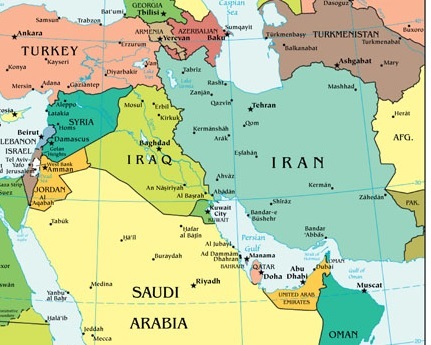


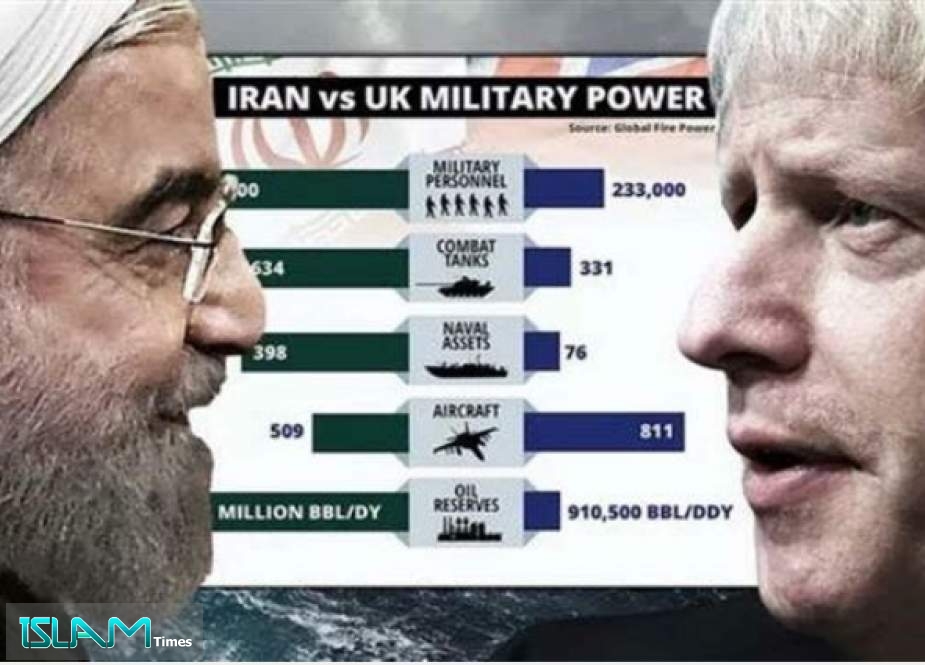



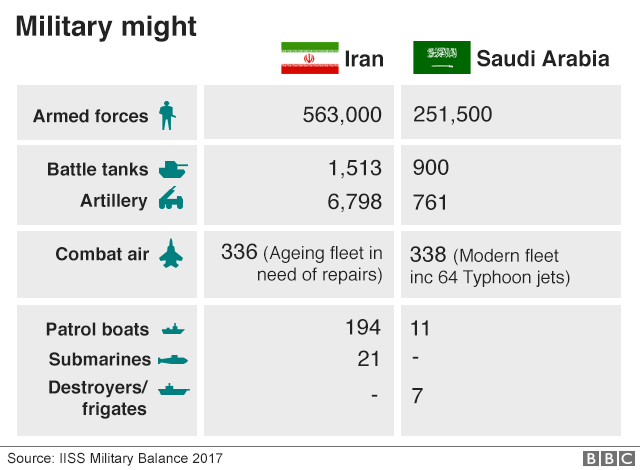
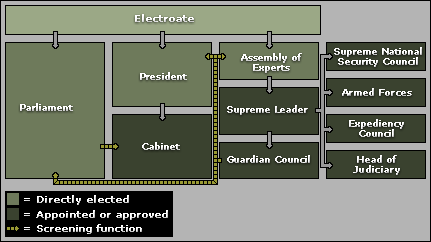


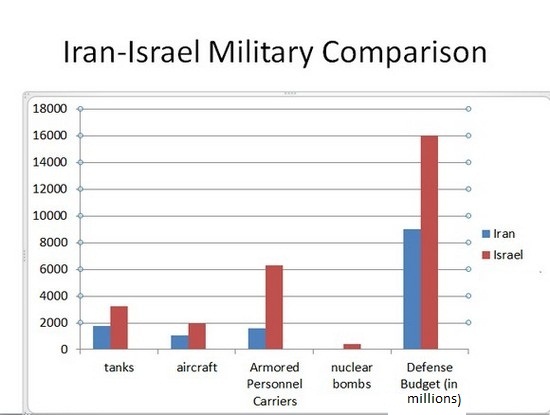
/arc-anglerfish-arc2-prod-mco.s3.amazonaws.com/public/6W6HTP65UZEEPDWPI6QSL2BIWM.jpg)





